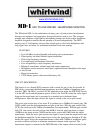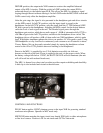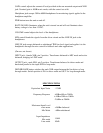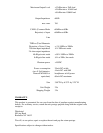
www.whirlwindusa.com
MD-1 MIC TO LINE DRIVER / HEADPHONE MONITOR
The Whirlwind MD-1 is the culmination of many years of joint product development
between our engineers and suggestions from professionals such as you. This compact
portable unit combines a high quality microphone preamp-line driver with a headphone
amplifier designed to monitor the mic preamp or be used independently. The MD-1
employs two 9-Volt batteries and provides enough gain to drive both headphones and
long signal lines and allow for maximum headroom in the mic preamp.
FEATURES
• Up to 66 dBm of gain adjustable with analog style potentiometer.
• Finest quality mu metal shielded input transformer.
• Wide range frequency response.
• Low input noise and harmonic distortion.
• Low susceptibility to radio frequency interference.
• Balanced, transformer isolated input and output connections.
• Headphone section monitors main input, separate balanced headphone line input
or mix of both.
• Rugged construction.
• 9 Volt battery power with reasonable battery life.
CIRCUIT DESCRIPTION
The input is a via a female XLR connector with a switch for mic or line level mode. In
MIC mode, a mu metal shielded input transformer provides 20dBm of impedance gain
with low THD. The MD-1 provides 18VDC phantom power when the MIC/LINE switch
is in the MIC mode and the phantom power switch is on. In LINE mode, the audio signal
bypasses the transformer and is presented to a standard active balanced input
configuration. After the input section, the signal is routed to the active gain circuit.
The active gain section uses a low noise IC to produce up to 26dBm of forward gain. The
GAIN control provides both attenuation and gain to the user. With the gain control fully
CCW, the circuit provides 50dBm of attenuation (line input mode). With the gain control
fully CW (mic mode) the unit will provide 66dB of forward gain from input to output
(18dB from the input section, 28dB from the active section and 20dB from the output
transformer). After the active gain section, the signal is sent to both the output driver and
the headphone amplifier. In the output driver circuit, the signal passes through an IC that
buffers the signal, drives the output transformer (which adds 20dBm of impedance gain),
provides isolation and helps to maintain maximum common mode rejection. The
transformer output is connected to the DRIVER side of the output selector switch. In the






